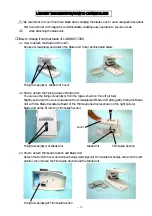
Coolant
I
CAUTION
Always use coolant made of
50% antifreeze with anticorro-
sion additive and 50% of clean
water. The antifreeze protects
the engine against internal cor-
rosion.
This mix must be used all year
around, even if there is no risk of
frost.
Never use water alone to
completely fill the coolant sys-
tem.
CLEAN WATER
Use clean soft water, distilled water
or tap water to mix with antifreeze.
Natural water generally contains
minerals and sometimes salt, which
can oxidize metal and accelerate
corrosion process.
ANTI-FREEZE
Never use poor quality antifreeze.
The main components of the anti-
freeze can corrode metal, gather-
ing rust in the cooling system over
an extended period. Poor quality
antifreeze has poor content of
corrosion preventive. The content
further becomes less potent with
the dilution of water.
Choose additive that will not have
any adverse effects on the materi-
als of the cooling system. Never
mix different additive as it may
cause chemical reactions and
therefore malfunctions.
WATER BOILER
A water boiler can be connected to
the engine coolant circuit.
If the boiler is located above the
engine, an additional recovery tank
must be installed above the boiler.
The amount of coolant must be
adapted depending the model of
water boiler to completely fill the
coolant system.
COOLANT EXPANSION
When it heats, the coolant expands
and takes up a higher volume.
The heat exchanger is fitted with a
system that allows to compensate
this expansion.
Make sure not to overfill the heat
exchanger when filling with coolant.
44
















































